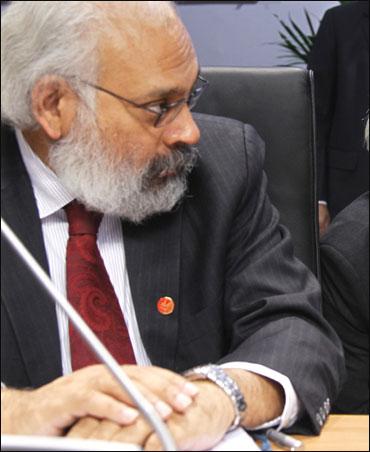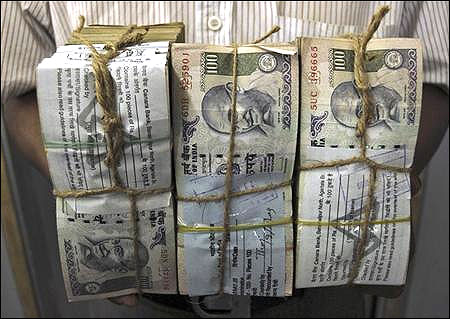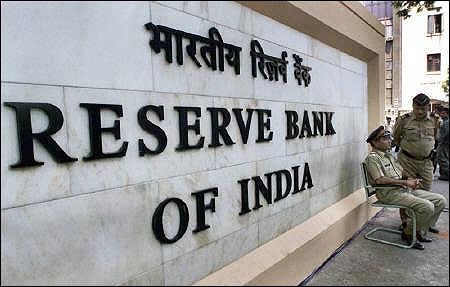 | « Back to article | Print this article |
'For rate cuts to happen, inflation should come down'
Reserve Bank of India deputy governor Subir Gokarn tells Manojit Saha that CRR cut does not rule out open market operations. Excerpts:
Since economic growth has fallen below the trend, how significant a role would RBI play in restoring growth?
One consequence of growth falling below trend is that inflation should also start coming down. We would have expected the process to be already underway, but this adjustment has been delayed, particularly because of the rupee's depreciation in the last quarter.
We expect the process to continue, and we have retained our projection of seven per cent inflation by March-end. And, it would continue to persist beyond March. That really gives us the space to accommodate the slowdown in growth with rate cuts.
But we have also said there are a number of risks, both on the inflation front as well as the macro economic front, particularly the fiscal situation.
So, that is going impose some limit on the amount of space we have to cut rates. We cannot commit to a time frame.
Click on NEXT for more...
Click here for Rediff Realtime News!
'For rate cuts to happen, inflation should come down'
It is less of a precise measurement and more of a judgment. The measurement comes from the magnitude of the deficit above the one per cent (of net demand and time liabilities) benchmark.
That gives us an immediate reason for examining it. Then we look at persistence. There have been situations in which it was above that benchmark, like December, and the last three months.
In December, we responded with open market operations (OMOs), as our monetary stance was still anti-inflationary. So, we could not visualise a CRR cut that time, and we did OMOs.
This time, we did OMOs up to the point where we felt we could go to a CRR cut. Because we have been giving guidance about the interest rate cycle having peaked, the CRR cut was not in conflict with the policy stance.
The policy cycle has peaked, so we could use the CRR as a liquidity measure. The CRR is a policy tool, but in this context, we have used the liquidity dimension in a way that it does not compromise our monetary policy stance.
Click on NEXT for more...
'For rate cuts to happen, inflation should come down'
Since you have addressed the problem of structural liquidity using CRR as a tool, would you be still open to OMOs?
Absolutely. I think the driver of OMOs is the judgment that there are persistent liquidity pressures in the system. The fact that we have reduced the CRR does not, in any way, rule out further OMOs. It would depend on how the situation evolves.
Do you have any expectation on the comfort zone of liquidity deficit to affect a rate cut?
No, I don't think the liquidity deficit will have any bearing on the rate cut. The rate cut would be driven by growth-inflation dynamics.
So, if we see inflation trending down quite sharply, along with some fiscal consolidation that leads to enduring changes to the growth-inflation dynamics, we could visualise a rate cut. The immediate trigger has to be inflation moving down.
Click on NEXT for more...
'For rate cuts to happen, inflation should come down'
In the policy statement, RBI has said growth in the next financial year would be better than this year. Why?
Partly because we expect in the course of the year, the rate cycle would be reversed, and there is some stimulus to investment coming from policy changes.
Do you expect banks to reduce interest rates or do you think monetary transmission would happen only after policy rate action?
Banks are ultimately businesses and their pricing decisions are taken like any other business.
We have certainly seen credit growth moderating in the past quarter, and that would suggest banks are facing some resistance to providing credit at the prices that they are offering.
To the extent that a CRR cut reduces the cost of funds, this provides some opportunity for banks to re-price products. Transmission happens on both the price and the quantity fronts.
The fact that credit growth slows as interest increases suggests some transmission is coming from the quantity front.




